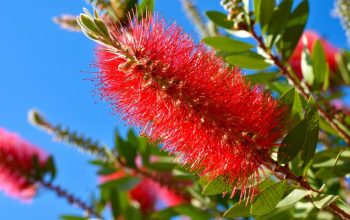Choosing the Right Pot for Different Plants
Plant pot with drainage – Selecting the appropriate pot and drainage system is crucial for the health and longevity of your plants. The right pot will ensure proper aeration of the roots and prevent waterlogging, which can lead to root rot and other plant diseases. Different plants have different water requirements, and understanding these needs is vital in choosing the right container and drainage solution.
Plant Water Requirements and Potting Recommendations
The following table Artikels the water requirements of several common plant types and recommends suitable pot types and drainage systems. Proper drainage is essential to prevent root rot, a common problem caused by consistently soggy soil.
| Plant Type | Water Requirement | Recommended Pot Type | Rationale |
|---|---|---|---|
| Water Lilies | High | Large, deep container with drainage holes (but submerged in water) | Requires consistently moist soil and ample space for extensive root systems. Drainage holes prevent complete water stagnation. |
| Begonias | High | Terracotta pot with drainage holes | Terracotta pots allow for good aeration and evaporation, preventing overly saturated soil, which begonias are susceptible to. |
| Philodendrons | High | Plastic pot with drainage holes; consider a self-watering pot | Plastic pots retain moisture better than terracotta, beneficial for plants with high water needs. Self-watering pots provide a reservoir to maintain consistent moisture levels. |
| Succulents | Low | Terracotta pot with drainage holes | Terracotta pots allow for rapid evaporation, preventing overwatering, which is detrimental to succulents. |
| Cacti | Low | Well-draining pot (terracotta or plastic with ample drainage holes) | Excellent drainage is crucial to prevent root rot in these drought-tolerant plants. |
| Snake Plants | Low | Pot with good drainage, even a pot without drainage holes can work if you’re very careful with watering. | Snake plants are extremely drought-tolerant and can tolerate slightly less frequent watering. However, good drainage is still recommended to avoid root issues. |
Pot Size and Root System Relationship, Plant pot with drainage
The size of the pot directly impacts drainage and overall plant health. A pot that is too small will restrict root growth and lead to faster drying, potentially causing underwatering stress. Conversely, a pot that is too large will retain excessive moisture, increasing the risk of overwatering and root rot. Ideally, the pot should be slightly larger than the root ball, allowing for expansion but not so large as to create a significant volume of excess soil.
For instance, a small succulent planted in a large pot is more likely to suffer from root rot due to the excessive moisture retained in the larger soil volume. Conversely, a large philodendron in a small pot will become root-bound, hindering its growth and increasing its susceptibility to drought.
Inadequate Drainage and Overwatering Issues
Inadequate drainage and overwatering lead to various plant problems, depending on the species. Overwatering can cause root rot in most plants, manifesting as wilting, yellowing leaves, and a foul odor emanating from the soil. Plants with high water requirements might show initial signs of overwatering only after prolonged periods of excessive moisture, while those with low water requirements will quickly show signs of distress.
For example, a succulent overwatered will rapidly show signs of mushy leaves and stem rot, while a philodendron may take longer to exhibit visible signs of damage. Inadequate drainage exacerbates the problem, as water remains in contact with the roots, preventing oxygen uptake and fostering anaerobic conditions favorable for pathogens.
Detailed FAQs: Plant Pot With Drainage
How often should I water plants in pots with drainage?
Water when the top inch of soil is dry. Check frequently during hot weather.
What if my drainage holes get clogged?
Flush the pot with water to clear clogs. You can also gently remove any debris with a small tool.
Can I use any type of pot for any plant?
No. Different plants have different water needs. Choose pots and drainage systems accordingly. Refer to our guide for recommendations.
How do I know when to repot my plant?
Repot when roots are circling the bottom of the pot or when the plant becomes root-bound.
What are the signs of overwatering?
Yellowing leaves, wilting despite watering, and soggy soil are signs of overwatering.
Behold, the humble plant pot with drainage – a lifeline for your precious green companions, preventing the dreaded root rot. For a vast selection of these vital vessels, ensuring your plants thrive, look no further than the unparalleled range at home depot plant pots ; their diverse styles cater to every horticultural heart. With proper drainage, your plants will flourish, a testament to your nurturing hand.












